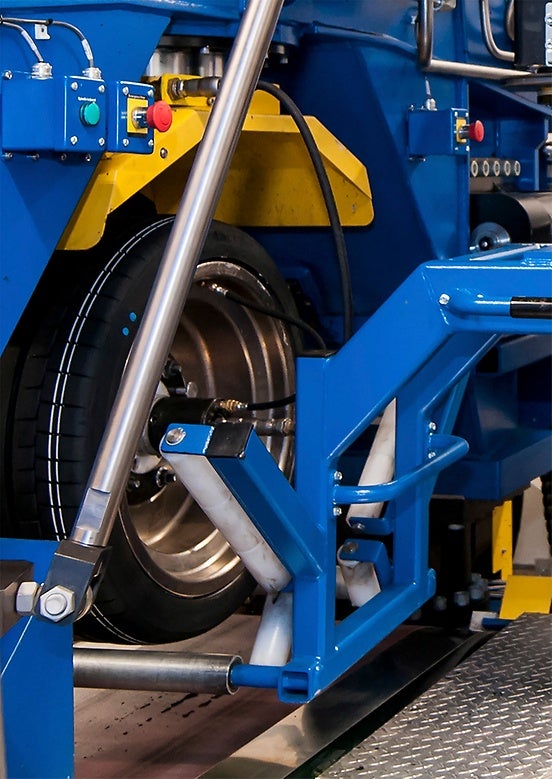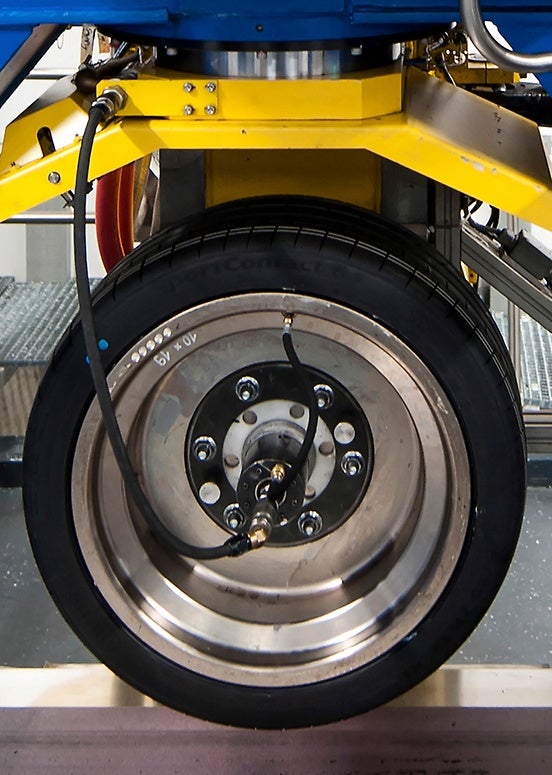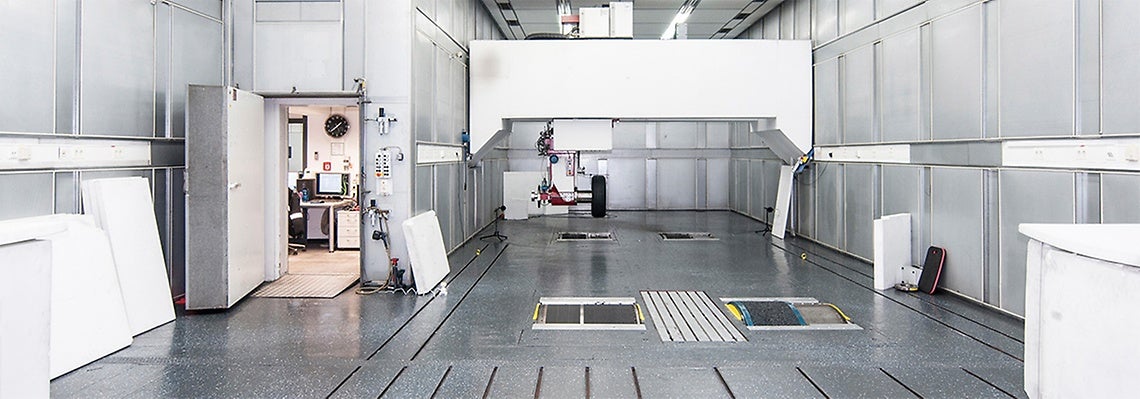
Tyre characteristics

The Characteristics Indoor department at Continental’s tyre development unit is a DAkkS-accredited test laboratory. Its primary tasks include measuring and verifying dynamic rolling resistance in accordance with EU tyre label guidelines. The EU tyre label works in a similar way to the energy efficiency label for washing machines and refrigerators, assigning ratings from A to E for three tyre characteristics: rolling resistance/fuel efficiency, wet grip and external noise. These label ratings are retested for each new generation of tyres and every product size that becomes available.
The Characteristics Indoor department at Continental’s tyre development unit is a DAkkS-accredited test laboratory.
All the way to the load limit
Around twenty test methods for car and truck tyres are available for this purpose, analysing the forces produced during tyre operation right up to the load limit. The methods include laser measurement, measurement of the distribution of forces on the tyre during travel using pressure measurement plates, plus load, camber and toe angle testing (“force & moment”), and static tests to check dissipation characteristics for electrical charges which build up during travel.
Flat belt and drum test rigs
Dissipation resistance testing is particularly important for safety as a moving vehicle can build up a static charge during the journey. The tyres provide a connection to the ground here, acting as a kind of earthing cable. If the tyre has inadequate electrostatic charge dissipation characteristics due to its design, this could lead to uncontrolled static discharges. The highly complex “force & moment” tests with various load, camber and toe angle settings are particularly time-consuming and are carried out on a flat belt test rig. All the other test series are performed on drum test rigs.

The department also works together with manufacturers to develop test methods for new steering concepts, such as multi-link axles, or tests for self-driving vehicles.
"Flat Spot“ Test
The “flat spot” test is equally important for the end user. It provides an indication of possible out-of-roundness after being stationary for a prolonged period, as may happen with motorhome or camper van tyres. This phenomenon can also occur after an extended period of high-speed motorway driving followed by a break. The hot tread cools while the vehicle is stationary causing the shape of the contact patch to change, after which the tyre may feel “out-of-round” until it warms up again.
One of three in the world
The main customers of the Characteristics Indoor department are Continental’s internal R&D departments, which continuously commission material and structural testing at the same time as arranging quality tests for OE customers. The department also works together with manufacturers to develop test methods for new steering concepts, such as multi-link axles, or tests for self-driving vehicles. As well as the lab in Hanover-Stöcken, Continental has set up another facility of this kind at the Puchov tyre plant in Slovakia and a third one in Uvalde, Texas (USA).

Related articles
-
 2023/05/18Endurance testingRead more
2023/05/18Endurance testingRead more -
 2023/05/18Noise, vibration and harshnessRead more
2023/05/18Noise, vibration and harshnessRead more -
 2023/05/18Cutting workshopRead more
2023/05/18Cutting workshopRead more